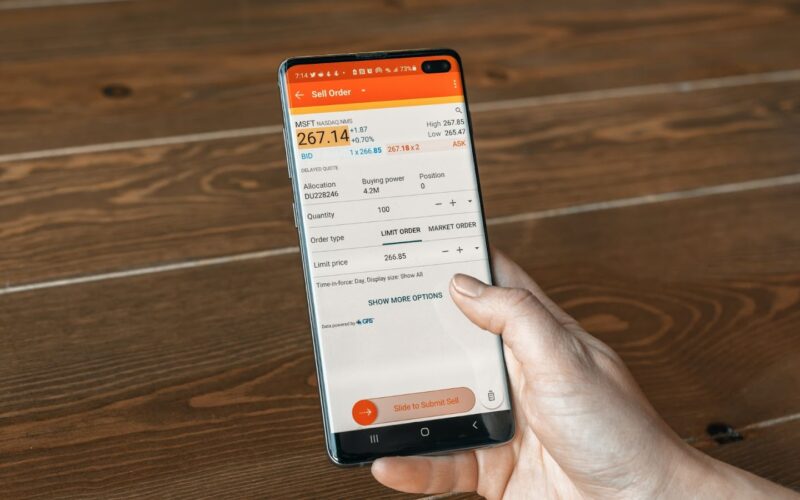Budgets are tight, delivery dates are fixed, and sponsors expect visible gains within the quarter, which forces leadership teams to prioritize initiatives that yield tangible results instead of pilots that linger without payback.
Disruptive technology matters in this setting because it enters at the edge of a market, competes on a different metric than incumbents, improves quickly, and resets the price–performance curve in ways that show up in conversion, cycle time, service cost, or incident rates.
The scrutiny is rising as well, since worldwide digital transformation spending is forecast to approach $4 trillion by 2027, according to IDC, which puts stronger demands on proof of impact from every program.
This blog defines disruptive technology and lists practical indicators that signal disruption in progress.
Key Takeaways
- Disruptive technologies reset market economics by offering better performance at lower costs, driving measurable ROI.
- Examples include AI-powered customer service, predictive analytics in retail, process automation in insurance, and smart wearables in healthcare.
- Revenue grows through optimized conversions, cost falls with automation, and risk reduces through faster detection and recovery.
- Key drivers: New metrics, rapid learning, modularity, and elastic scaling are the hallmarks of disruption.
A Short History of Disruption
Disruption arrives from a lower-end or side segment, competes on a different performance metric, scales through new distribution and cost curves, and then resets category economics.
Mobile illustrates the speed of such shifts. U.S. adult smartphone ownership rose from 35% in 2011 to 91% in 2024, which flipped content, commerce, and service delivery to mobile-first execution.
1. Early Examples: Photography and Media
Each category shows the same pattern: a new entry metric beats an incumbent metric once scale and learning curves take hold.
Photography
- Entry vector. Digital capture began with lower perceived quality but near zero marginal cost per shot.
- Flywheel. Short feedback loops increased iteration speed and shifted value to software and sensors.
- Incumbent impact. Film and processing volume collapsed. Kodak entered Chapter 11 in January 2012.
Media
- Entry vector. Streaming delivered elastic catalogs with recommendation engines.
- Flywheel. Usage data-informed licensing and investment in originals.
- Incumbent impact. Physical media and broadcast schedules lost share as subscriptions scaled. Netflix projected streams would surpass DVDs in Q4 2010.
2. Cloud and Mobile Waves: New Distribution and Cost Curves
Cloud changed how capacity is planned, funded, and shipped. Provisioning moved from long procurement cycles to near-instant allocation, which let small teams release more frequently and treat infrastructure as a set of repeatable policies rather than tickets.
Mobile reset distribution and feedback loops by putting apps and the mobile web one tap away from the customer, with event-level telemetry driving faster iterations and in-session support.
Workflows moved into the hands of field staff and end users, which made offline capability and quick recovery essential design choices.
3. Lessons from Failed Incumbents
Failures cluster around metric blindness, channel protection, and capital misallocation.
- Misread metrics. Optimize legacy KPIs while buyers switch to new metrics that entrants serve better.
- Distribution lock-in. Protect channels instead of building neutral APIs and app integrations.
- Capital misallocation. Overinvest in sustaining upgrades and underinvest in learning systems and new distribution.
- IP as a moat only. Patents do not fix a broken profit engine. Kodak’s bankruptcy illustrates the limits of IP-driven defense.
4. Lessons from Successful Adapters
Winners restructure metrics, teams, and cadence to match the entrant’s play.
- Reframe the job. Adopt the entrant’s performance metric early and retire conflicting targets.
- Parallel P&L. Give a new line authority to price, ship, and integrate on different terms.
- Data spine first. Establish unified IDs, event streams, data quality gates, and role-based access.
- Product cadence. Hold weekly demos, monthly releases, and quarterly roadmap resets.
- Targeted partnerships. Bring in squads for integration, testing, and security to compress time to value.
Curious about how GenAI can transform your business? At Codewave, we specialize in integrating GenAI into your workflows to boost efficiency, simplify processes, and enhance customer engagement. From building conversational bots to automating complex report generation, we make AI work for you.
How Disruptive Technology Drives ROI in 2025
Disruption pays when a product alters the key metric buyers use to make decisions and converts that change into tangible cash flow on a predictable timeline. Revenue grows where intent is captured and expanded. Cost falls where handoffs and rework disappear. Risk drops where detection is earlier and recovery is faster.
The sections below map those levers to features that make a technology truly disruptive, with concrete targets you can adopt in planning and reviews.
Checkpoint 1: Increase revenue by lifting conversion
Before optimizing top-of-funnel volume, focus on strengthening the moments where buyers make their decisions.
Use in-product assistance at decision points, structured trials that guide to first value, and pricing that scales with usage. Prioritize intent and activation over vanity traffic.
Targets
- Qualified conversion: +2 to +5 percentage points on top flows
- Expansion revenue: +10% to +20% in the first cohort
- New line: one pilot SKU with a defined attach rate
Checkpoint 2: Lower operating cost by automating work
Reduce touches and rework by automating steps with clear definitions of done, replacing manual reconciliations with event streams, and standardizing test suites. The goal is to achieve faster cycles without compromising quality.
Targets
- Cycle time: −20% to −40% on the first process
- Defects: −30% across the first two releases
- Unit cost: flat or down as volume rises
Checkpoint 3: Reduce risk by accelerating detection
Shorten incident windows and simplify audits by moving detection earlier, limiting blast radius with granular permissions, and expressing recurring checks as policy in code.
Targets
- Time to detect (priority services): <5 minutes
- Time to recover (priority services): <30 minutes
- Audit prep time: −50%
Features That Separate Disruption From a Routine Upgrade
The same attributes show up whenever the ROI holds under pressure.
- New metric wins while legacy metrics lag. Early versions may trail on incumbent measures but win on the entrant’s measure, such as immediacy, convenience, or flexibility. Track both and retire the ones buyers no longer use to decide.
- New operating or distribution model. Direct reach through apps or APIs, usage-based packaging, and self-service onboarding compress sales cycles and expand surface area without proportional headcount.
- Rapid learning from data and feedback. Event-level telemetry and cohort reviews feed weekly adjustments to ranking, pricing, or workflow rules. Learning speed becomes the moat.
- Modularity and integration readiness. Clean APIs, standard schemas, and contract tests reduce integration debt and make replacements cheaper. This keeps future options open.
- Economies of scope. Components and models that apply across products or functions let wins in one area fund the next area without a new platform effort.
- Capital efficiency and elastic scaling. Start as a small operational expense, scale with usage, and cap spend through budgets and alerts. Treat capacity as policy, not procurement.
Now that we have a clearer picture, let’s look into some concrete examples of disruptive technologies making a measurable impact today.
Examples: Disruptive Technologies With Measurable Impact
Disruptive technologies are changing industries and driving tangible results in 2025. In retail, predictive analytics models are helping optimize inventory management and reduce stockouts.
Meanwhile, IoT-enabled wearables are improving remote healthcare monitoring, and humanoid robots in manufacturing are enhancing precision and reducing downtime, with projections indicating significant growth in the use of robots by 2030. These are some more of the top examples:
1. Generative and agentic AI
How it developed: Foundation models moved from lab demos to productized assistants embedded in IDEs, help desks, and content pipelines. Providers exposed APIs, added guardrails, and shipped domain adapters, which made pilot-to-production paths shorter.
Independent field studies report developers completing coding tasks up to 2× faster with generative AI, reinforcing the case for measured rollout with guardrails.
2. Predictive analytics and forecasting
How it developed: Forecasting moved from spreadsheet heuristics to probabilistic models that ingest promotions, seasonality, events, and telemetry. Off-the-shelf toolkits lowered the skill threshold; data pipelines made retraining routine.
Why it is disruptive: It replaces coarse monthly plans with rolling signals that adjust buys, staffing, and pricing. Published benchmarks attribute 20–50% error reduction and up to 65% fewer lost sales from stockouts to AI-driven forecasting programs.
3. Process automation and orchestration
How it developed: Rules engines, API gateways, and workflow services replaced brittle point-to-point scripts. Testable contracts and event streams made handoffs observable and auditable.
Why it is disruptive: It eliminates labor from repetitive tasks without concealing the risk. In large programs, operating cost reductions of 15–30% are reported when digital work management and automation are applied across maintenance and back-office flows.
4. Extended reality for training and field work
How it developed: Wearables and spatial authoring tools have matured enough to enable step-by-step procedures and remote assistance with low friction. Content libraries moved from ad-hoc videos to versioned SOPs with checkpoints.
Why it is disruptive: It makes expert guidance available at task time and turns training into supervised practice. Boeing reported wiring tasks completed 25% faster with near-zero errors when technicians followed AR instructions on smart glasses.
As we wrap up the examples, let’s take a look at how these technologies are applied across different industries to show tangible outcomes.
Industry Applications and Outcome Metrics
Ultimately, leaders care about where the work changes, how quickly value is realized, and which numbers prove it.
The table below maps each industry to practical technology plays and the outcomes to track, so reviews stay focused and comparable across teams.
| Industry | How the tech is used | Outcome metrics to track |
| B2B SaaS | • AI copilots guide users to the first value • Self-serve onboarding reduces friction • Usage-based pricing matches spend to adoption | • Activation rate • Expansion ARR • Support cost per account • Feature adoption |
| Retail & eCommerce | • Real-time recommendations shape the cart • Micro-fulfillment tightens promise windows • Computer vision reduces loss at the aisle and dock | • Average order value • Pick–pack speed • Shrinkage • Order cycle time |
| Healthcare | • Ambient scribing returns clinician time • Triage bots route cases early • Remote monitoring flags risk before escalation | • Clinician time reclaimed • No-show rate • Readmissions • Chart completion time |
| Manufacturing | • Predictive maintenance plans work on condition • Vision QC catches defects in line • Digital twins stabilize throughput | • OEE • Scrap rate • MTBF/MTTR • Downtime minutes |
| Financial Services | • Explainable risk models speed approvals • Fraud graphs reveal patterns • Automated KYC keeps reviews consistent | • Fraud loss • False-positive rate • Time-to-clear • Cost per review |
| Logistics & Mobility | • Dynamic routing balances loads • Dock scheduling smooths yard flow • Telematics improves driver safety | • On-time-in-full • Empty miles • Claim rate • Fuel per mile |
Before we move forward, it’s important to address the common challenges businesses face when trying to implement these disruptive technologies and how to overcome them.
Also Read: Top 10 Best Technologies Transforming the Future
Common Challenges and Practical Solutions
Disruption efforts stall for predictable reasons, and the cost of delay compounds quickly, so treat the following challenges as early checkpoints rather than post-mortems.
The goal is straightforward: identify the pattern, select a small set of actions you can execute within thirty days, and track key outcome metrics that confirm progress.
1. Data quality and access
Fragmented sources, unclear ownership, and stale records erode trust and slow every initiative. Begin by making your existing data usable and auditable.
Actions
- Produce a source inventory with owners, refresh cadence, and sensitivity.
- Add quality gates for completeness, duplicates, and outliers at ingest.
- Record lineage from source to dashboard for every critical field.
- Enforce role-based access and log queries against sensitive tables.
Signals of progress
- Fewer manual fixes per release, fewer blocked tickets, and clear data owners on every story.
2. Integration debt
Point-to-point links break at each change and hide errors until late. Replace fragile handoffs with contracts and events.
Actions
- Move interfaces to API first design with versioned schemas.
- Shift state transfer to event streams where order and replay matter.
- Add contract tests to catch changes before deployment.
- Retire unused endpoints to shrink blast radius.
Signals of progress
- Lower defect rate from integration issues and shorter time to restore after changes.
3. Security and privacy risk
Expansion across tools and vendors increases the attack surface and blurs ownership. Integrate control into your daily delivery workflow.
Actions
- Apply least privilege access and secret rotation on a schedule.
- Scan dependencies, code, and runtime in the pipeline and block on critical findings.
- Express privacy and retention rules as policy in code with evidence stored by default.
- Run scheduled reviews for access paths used by people, vendors, and AI systems.
Signals of progress
- Faster detection and recovery, fewer repeat findings in audits, and lower severity incidents.
4. Change management and skills gaps
Good ideas stall when teams are unsure about the next steps or the significance of their work. Treat adoption as part of the work, not an afterthought.
Actions
- Name an executive sponsor who can clear blockers within days, not weeks.
- Keep a human in the loop for new flows until data proves stability.
- Publish simple playbooks and run short training tied to one task at a time.
- Hold weekly demos with usage and outcome numbers, not slides.
Signals of progress
- Rising active use by target roles, fewer workarounds, and faster time to first value.
5. Vendor dependency
Opaque pricing and closed formats create lock in and slow change. Protect options before scale.
Actions
- Negotiate exit terms, data export, and model portability up front.
- Prefer open standards for data, identity, and logging.
- Keep one alternate vendor in light evaluation to preserve pricing power.
- Isolate vendor services behind your own interfaces to limit rewrites later.
Signals of progress
- Clean data exports on request, comparable pricing from a second supplier, and minimal code changes when swapping a component.
6. Measurement failure
Programs drift when goals are vague and baselines are missing. Tie every bet to cash, time, or risk and measure from day one.
Actions
- Capture a baseline over two recent cycles for the lead KPI and two guard KPIs.
- Wire a live dashboard before the pilot goes live and assign owners for each metric.
- Set a first value date and a payback window; stop or narrow scope if the lead KPI does not move by the midpoint.
- Review weekly with numbers and decisions, not status only.
Signals of progress
- Visible movement on the lead KPI, fewer debates about which metric matters, and faster calls to scale or stop.
How Codewave Turns Disruptive Tech into Measurable Outcomes
Codewave works as a cross-functional squad that pairs design thinking with engineering and data, so pilots ship fast and numbers move in quarter one. The team has delivered over 400 projects across more than 15 countries, supporting both SMEs and enterprises.
What we deliver:
- Product design, UX and UI, and customer experience improvements that connect to clear KPIs.
- Application engineering across React Native, ReactJS, Android, Flutter, Python, and modern web stacks.
- AI and ML development with a focus on measurable outcomes and safe use of data.
- QA and automation testing that standardizes quality gates and shortens release cycles.
- Security services including vulnerability assessment and penetration testing, and secure code review.
- DevOps and DevSecOps that integrate CI/CD, scanning, and monitoring into the delivery pipeline.
- Team augmentation to add skilled engineers and designers to in-house teams when speed matters.
How Codewave reduces delivery risk:
- Design thinking in practice. Problem framing, user tests, and quick iterations before scale.
- Engineering discipline. Contract tests, observability, and rollback plans as standard.
- Security by default. Least-privilege access, secret rotation, and policy as code with evidence on file.
- Choice of engagement. Project delivery, embedded squads, or team augmentation with clear SLAs.
- Knowledge transfer. Runbooks, handover sessions, and benchmarks you can reuse across teams.
Explore our portfolio to see our shipped work across SaaS, retail, healthcare, manufacturing, and the public sector.
Conclusion
Disruptive technologies matter when they change how work gets done and move the numbers that decide the budget. AI assistants speed ticket handling and coding. Predictive models replace guesswork with rolling signals. Automation removes handoffs and rework. IoT and twins switch maintenance from schedule to condition.
When you set one lead KPI, wire a simple dashboard on day one, and review weekly, those shifts show up in conversion, cycle time, and incident windows within a quarter.
Work with Codewave: Turn Ideas into Outcomes
Codewave applies design thinking with lean delivery so you see movement fast.
- Improve an existing product with short discovery, user tests, and iterative releases that match how customers actually use it.
- Design a new digital experience with personas, journey maps, wireframes, and clickable prototypes in Figma or InVision before development starts.
- Build an embedded interface with Qt or Flutter that respects device limits and still feels simple
- Prototype an idea with A/B tests, interviews, usability studies, and clickstream reviews, then refine until it meets user needs and business goals.
Contact us today to learn more!
FAQs
Q: How should I budget a 90-day pilot without locking into long contracts?
A: Fund one scoped workflow and cap cloud and vendor costs with usage limits. Ask for month-to-month terms, export rights, and a written exit path. Put 70% of spend on build and operational wiring, 30% on measurement and training, so a stop decision still leaves you with reusable telemetry and interfaces.
Q: What incentives help teams adopt the new workflow instead of reverting to old habits?
A: Tie team goals to the pilot’s lead KPI and publish a simple before/after view weekly. Give front-line owners early say in design and keep a human in the loop until the metric stabilizes. Reward removal of manual steps and retiring of legacy reports; do not reward ticket volume.
Q: How do I choose the first integration when my stack is legacy ERP plus custom tools?
A: Start where data is clean and the decision loop is short, even if it is not the biggest cost center. Wrap the legacy system with a small API and a contract test, then move state via events so future changes do not break the flow. Scale only after two sprints of stable metrics.
Q: What security reviews should I plan for if I introduce AI assistants?
A: Document data classes, retention, and redaction rules; restrict model access by role; and log prompts/outputs for audit. Block builds on critical findings in CI and rotate secrets on a schedule. If a third-party model is used, get processor terms and a data-handling addendum in writing.
Q: When should I stop a pilot that is not moving the numbers?
A: Use a midpoint review against the baseline and the lead KPI. If there is no measurable shift, either cut scope to the highest-leverage step or stop and write down what was learned. Keep the telemetry, API contracts, and tests; those assets carry into the next bet even if the pilot ends.
Codewave is a UX first design thinking & digital transformation services company, designing & engineering innovative mobile apps, cloud, & edge solutions.







